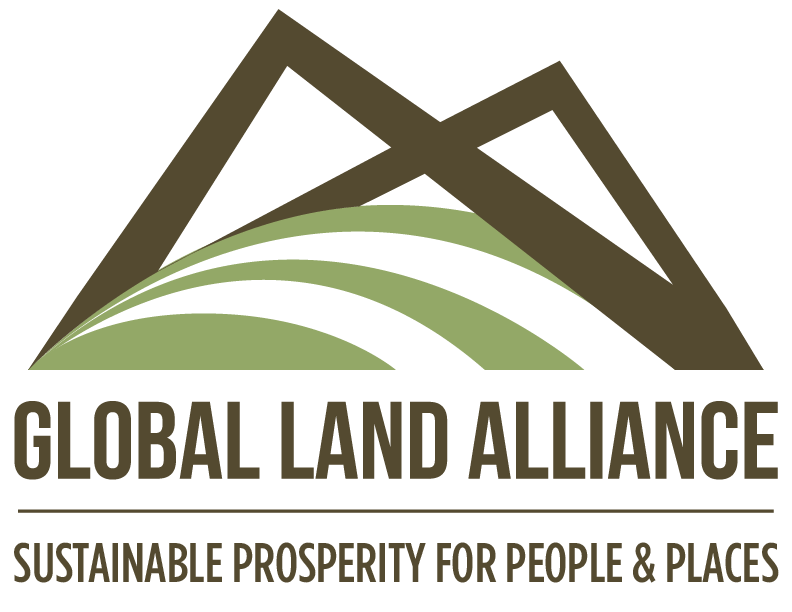Global Land Alliance occupies land that has been cared for and stewarded by First Nations Peoples since time immemorial. Those who work and contribute to GLA are decentralized to many areas across the so-called U.S. and the world, and yet we can be sure that most of us, if not all, are occupants of stolen land. This is an acknowledgement of our role in the historical and ongoing colonization and theft of this land.
The GLA office is located in what is now known as Washington D.C. This land is most closely associated with the Nacotchtank and Piscataways peoples. Piscataway history tells us that their stewardship of this land extends back for at least 24,000 years. The Piscataway Conoy people are modern people still living on, and taking care of this land today.
Global Land Alliance as an organization has occupied space on this territory since 2015. GLA was founded by Jolyne Sanjak, Kevin Barthel, and Malcolm Childress who had a vision for meaningful and sustainable prosperity in the land rights space. As we grew from home office, to desk space, to our own GLA office, we moved to different parts of this occupied land the First Nation Peoples have long stewarded. Our current office now faces a large mural on Thomas Circle which depicts protective Indigenous women entitled “Guardians of the Four Directions”. We acknowledge that this privilege of living and doing business in the United States exists because of the oppression, genocide, and removal of the original caretakers of these lands and resources.
Art and photo credit to MissCheLove, “Guardians of the Four Directions” Thomas Circle
We understand through their records that the village of Nacotchtank (from which the name Anacostia is derived) was the largest of the three American Indian villages located in the Washington area and is understood to have been a major trading center. The people of Nacotchtank were an Algonquian-speaking people that lived along the southeast side of the Anacostia River. Their name was said to be derived from the word “anaquashatanik,” meaning “a town of traders”. A second town, Nameroughquena, most likely stood on the Potomac's west bank, opposite of what today is Theodore Roosevelt Island. Another village existed on a narrow bluff between today’s Chesapeake and Ohio Canal and MacArthur Boulevard in the northwest section of the city.
By the late 1660s, after 40 years of contact with European colonizers, the Anacostans had been nearly exterminated by fighting and disease. The remaining members of the tribe moved for a short period to what we now know as Roosevelt Island. The earliest settler name for Roosevelt Island was Ancostan Island. After that relocation, the remaining Anacostans eventually dispersed themselves into the larger Piscataway tribe.
The Nacotchtank seem to have been associated with the larger Piscataway, whose Tayac or grand chief ruled over a loose confederacy of area tribes. The Nacotchtank paid tribute to the Piscataway chief who resided to the south in the nearby village of Moyaone in what is now Accokeek in Prince George's County. The name ‘Piscataway Conoy’ is the English translation of Kinwaw Paskestikweya "The people who live on the long river with a bend in it" or what we now call the Potomac.
We wish with this land acknowledgement to uplift the current efforts of the Cedarville Band of Piscataway Conoy Indians to “restoring sovereignty, and returning to our rightful place on this land.”
Cedarville Band of Piscataway Conoy Indians mission: “Be a coherent source of empowerment, preservation, and co-creation for indigenous communities of the Chesapeake region - while sharing our unique culture with the world.” whose goals are to “safeguard traditional protocol and stewardship of our community. Restore wellness and balance to our people and Mother Earth. Self-determination; regain control of our story and history.”
When asked what is recognition, the Cedarville Band of Piscataway Conoy Indians responded:
“In 1634 when Europeans began to come to the new world, they were mostly entrepreneurs, and businessmen. The sole initiative was to gain access to the very valuable resources of the “New World”. In the case of Maryland, that resource was tobacco. Although these men traded for other resources, furs, seeds of a variety of foods. However these men came with the funding provided by the king or Queen who ruled over them. In Maryland the businessmen were Dutch, German, and French.
The largest population came from England. Therefore, most trade and conflicts were with the Crown of England. At this time there were no states nor had the name “America” been applied to the “new”, but very old world.
It was not until the year 1776 when the European war of independence was fought and perceived to have been won did these businessmen call the new world “America”.
However, by this time most Eastern Indigenous people had long been pushed aside with mostly everything we valued and once owned now in the hands of foreigners. It remained a struggle to maintain a presence in our homeland.
This newly created Government was constantly being visited by Indigenous peoples demanding their rights to their land, their treaties, their resources, culture and way of life- which was now being denied because this new government claims there are no Indigenous people (as Jackson was responsible for removing all Indians East of the Mississippi). If you want to discuss your rights to the land and it’s resources you must first prove your birth” -source.
Global Land Alliance, as advocates for transparent and equitable land governance, acknowledges the importance of the Landback movement and strives to do better learn and unlearn about Landback models and Indigenous stewardship and to uplift Indigenous voices across turtle island.
Learn more about the Cedarville Band of Piscataway Conoy Indians and to pay rent/land-tax for occupying their land:
Learn more about the land you are occupying:
Sources consulted for this land acknowledgement include:
https://www.piscatawayindians.com/
https://americanindian.si.edu/sites/1/files/pdf/education/chesapeake.pdf
http://onceasitwasdc.org/index.html
https://native-land.ca/territory-acknowledgement/
https://www.nps.gov/articles/native-peoples-of-washington-dc.htm
https://ndncollective.org/ndn-collective-landback-campaign-launching-on-indigenous-peoples-day-2020/


